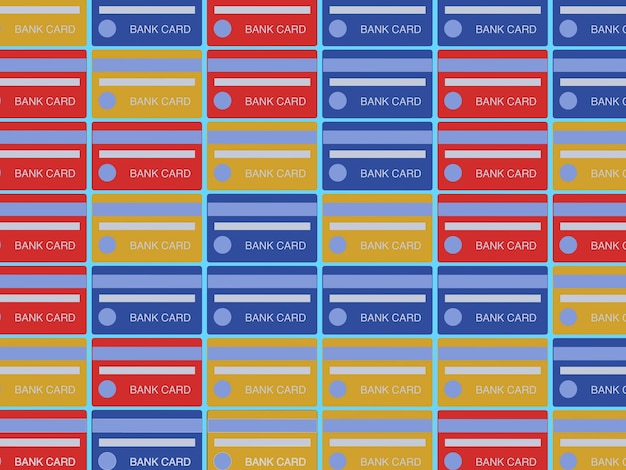Subscription Fatigue in 2025: Will Consumers Cancel Memberships?

Subscription fatigue in 2025 may lead consumers to cancel memberships as they reassess the value and necessity of multiple ongoing subscriptions in the face of economic pressures and content saturation.
Are consumers reaching their limit with subscription services? The term subscription fatigue in 2025 might become even more prevalent as people evaluate their recurring expenses and weigh the benefits against the costs.
Understanding Subscription Fatigue
Subscription fatigue is the state of being overwhelmed by the number and cost of various subscription services. It’s a growing concern as more industries shift to subscription-based models, from streaming entertainment to software and even consumer goods.
This weariness stems from several factors, including the cumulative cost of subscriptions, the effort required to manage them, and the feeling that many subscriptions are underutilized.
The Rise of Subscription Services
In recent years, subscription services have exploded in popularity. Driven by convenience and often lower upfront costs, they’ve become a staple in many households.
Why Consumers Initially Embraced Subscriptions
Initially, consumers were drawn to the flexibility and affordability that subscriptions offered. For example, streaming services provided access to vast libraries of content for a fraction of the cost of purchasing individual movies or albums.
- Convenience: Easy access to a wide range of products and services.
- Cost-Effectiveness: Potentially lower costs compared to traditional purchasing.
- Personalization: Tailored experiences and recommendations.
However, as the number of available subscriptions has grown, so has the potential for subscription fatigue.

In conclusion, subscription fatigue is driven by the sheer volume and cost of subscriptions, leading consumers to re-evaluate their necessity, especially when cheaper and/or one-time purchase alternatives are available.
Factors Contributing to Subscription Fatigue in 2025
Several key factors are expected to intensify subscription fatigue as we move into 2025. These include economic pressures, content saturation, and the increasing complexity of managing multiple subscriptions.
Understanding these drivers is crucial for businesses looking to retain subscribers and for consumers seeking to regain control of their finances.
Economic Pressures and Budget Constraints
Economic downturns and rising inflation can significantly impact consumer spending habits, forcing individuals to cut back on non-essential expenses. Subscriptions, often viewed as discretionary, are prime candidates for cancellation.
Content Saturation and Limited Time
The abundance of content available through streaming services and other subscriptions can lead to a paradox of choice. Consumers may find themselves overwhelmed by options, reducing their satisfaction and perceived value.
Subscription Management Complexity
Keeping track of multiple subscriptions, their renewal dates, and associated costs can be a daunting task. Many consumers find themselves paying for services they no longer use or need simply because they forget to cancel them.
- Rising Costs: The overall expense of multiple subscriptions strains budgets.
- Time Scarcity: Limited time to consume or utilize all subscribed services.
- Administrative Burden: Managing renewals, passwords, and payment information.
In conclusion, as economic pressures mount and the sheer volume of subscription options continues to grow, consumers are increasingly likely to experience and act upon subscription fatigue.
Consumer Behavior and Cancellation Trends
Consumer behavior is evolving as subscription fatigue sets in. Cancellation trends are becoming more pronounced, with consumers actively seeking ways to reduce their subscription burden.
Understanding these trends is vital for businesses and consumers who wish to adapt together in this evolving landscape.
Identifying the Tipping Point
For each individual, there’s a tipping point where the perceived value of subscriptions no longer outweighs the costs and hassles. This threshold varies based on income, lifestyle, and personal preferences.
Strategies for Subscription Management
Consumers are employing various strategies to manage their subscriptions, including using budgeting apps, setting reminders for renewal dates, and regularly auditing their subscription list.
The Impact of Free Trials and Introductory Offers
While free trials and introductory offers can attract new subscribers, they can also contribute to subscription fatigue if consumers forget to cancel before the promotional period ends.

In conclusion, cancellation trends reflect a growing awareness among consumers of the financial and administrative burdens associated with multiple active subscriptions, leading to more deliberate and strategic management of their expenses.
Industries at Risk of High Churn
Certain industries are more susceptible to high churn rates due to subscription fatigue. Understanding these vulnerabilities is critical for businesses in these sectors to develop effective retention strategies.
The following industries have to be mindful of the upcoming changes in subscription trends.
Streaming Entertainment Services
The streaming entertainment industry, with its plethora of competing platforms, faces significant churn risk. Consumers often subscribe to multiple services to access specific content, only to cancel them after watching what they wanted.
Software-as-a-Service (SaaS)
SaaS providers, particularly those targeting individual consumers and small businesses, may see increased churn as users seek to consolidate their software subscriptions or switch to one-time purchase alternatives.
Subscription Boxes and E-commerce
Subscription boxes, which offer curated selections of products on a recurring basis, are also vulnerable to subscription fatigue. Consumers may tire of receiving similar items or find that the value doesn’t justify the cost.
- Streaming: Content overload leads to cancellations after binge-watching.
- SaaS: Users consolidate subscriptions or opt for perpetual licenses.
- Boxes: Lack of novelty and perceived value drive churn.
In conclusion, industries that rely heavily on subscription models must proactively address subscription fatigue by offering more flexible plans, personalized content, and enhanced value to retain subscribers.
Strategies for Businesses to Combat Subscription Fatigue
Businesses can take proactive steps to combat subscription fatigue and retain customers. These strategies focus on enhancing value, improving communication, and offering flexible subscription options.
Businesses must evolve and innovate to meet consumers’ expectations and reduce subscription fatigue.
Personalization and Content Customization
Personalizing the subscription experience can significantly increase perceived value. Businesses can use data analytics to tailor content recommendations, product selections, and offers to individual preferences.
Flexible Subscription Plans and Pricing
Offering flexible subscription plans and pricing options can cater to different consumer needs and budgets. This may include tiered pricing, pay-as-you-go models, or the ability to pause or cancel subscriptions easily.
Enhanced Communication and Customer Support
Clear and transparent communication is essential for building trust and managing customer expectations. Businesses should provide regular updates on new content, product features, and subscription benefits, as well as responsive customer support.
Here are some important points about improving communication.
- Data-Driven Personalization: Tailor experiences to individual preferences.
- Flexible Options: Provide tiered pricing and easy cancellation.
- Transparent Communication: Keep subscribers informed and engaged.
In conclusion, by prioritizing personalization, flexibility, and clear communication, businesses can mitigate the impact of subscription fatigue and foster stronger, more sustainable relationships with their subscribers.
The Future of Subscription Models
The future of subscription models will likely involve greater emphasis on flexibility, personalization, and value. Businesses will need to adapt to changing consumer preferences to thrive in an increasingly competitive landscape.
The question is, how do we move forward from subscription models?
Bundling and Cross-Platform Integration
Bundling subscriptions across different platforms or services can offer consumers greater value and convenience. For example, a telecommunications company might bundle internet, streaming entertainment, and cloud storage into a single subscription.
Value-Added Services and Exclusive Content
Providing value-added services, such as exclusive content, early access, or discounts on related products, can enhance the perceived value of a subscription and reduce churn.
Focus on Long-Term Engagement and Retention
Businesses will need to shift their focus from acquiring new subscribers to retaining existing ones. This requires building strong relationships with customers, providing exceptional service, and continuously innovating to meet their evolving needs.
In conclusion, the future of subscription models hinges on the ability of businesses to provide personalized, flexible, and value-driven experiences that resonate with consumers and foster long-term loyalty.
“`html
| Key Point | Brief Description |
|---|---|
| 💰 Budget Constraints | Economic pressures force consumers to cut subscription costs. |
| 📺 Content Saturation | Too much content overwhelms users, reducing subscription value. |
| 🔂 Subscription Management | Managing multiple subscriptions can be complex and time-consuming. |
| 🤝 Business Solutions | Businesses can combat churn with personalization and flexible plans. |
“`
Frequently Asked Questions
Subscription fatigue is the feeling of being overwhelmed by the number and cost of the subscriptions someone has. It often leads to reassessing and canceling some services.
Subscription services are popular because they offer convenience, affordability, and personalized experiences. They provide ongoing access to products or services for a recurring fee.
Industries like streaming entertainment, SaaS, and subscription boxes are highly affected by subscription fatigue due to the high volume of choices and recurring costs.
Businesses can offer personalized content, flexible subscription plans, and clear communication to combat subscription fatigue and retain subscribers effectively against potential churn.
Consumers can use budgeting apps, set reminders for renewals, and periodically audit their subscription lists to avoid paying for unused services and manage their expenses.
Conclusion
As we look ahead to 2025, subscription fatigue is poised to become an even more significant factor in consumer decision-making. While subscription models offer convenience and access, they also require careful management and ongoing evaluation. Ultimately, success in the subscription economy will depend on businesses’ ability to adapt to changing consumer needs and provide compelling value.
